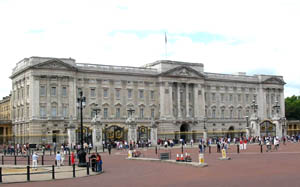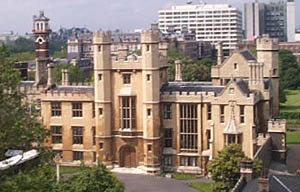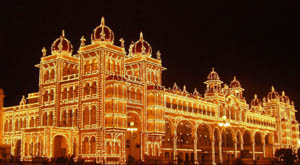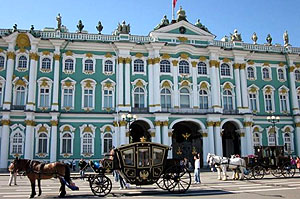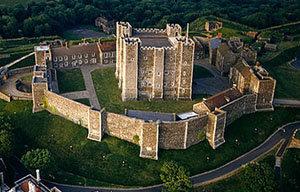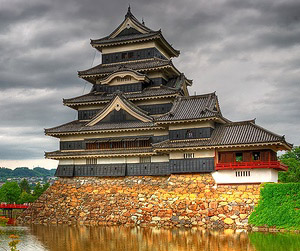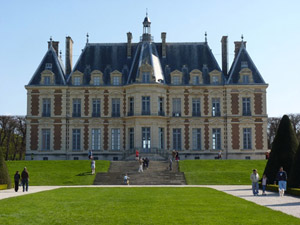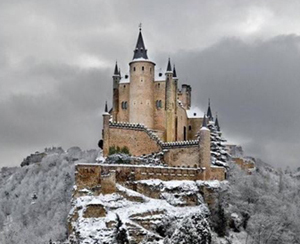Types of Castle and The History of CastlesPalaces |
|
|
|||||||||||||||||
Palaces
A palace is a grand residence, especially a royal residence or the home of a head of state or Church dignitary, such as a bishop, archbishop cardinal or Pope. In parts of Europe, the term is also applied large urban buildings built as the private mansions of the aristocracy. Many historic palaces are now put to other uses such as parliaments, museums, hotels or office buildings. The word palace comes from Old French palais (imperial residence), from Latin Palātium, the name of one of the seven hills of Rome. The original palaces on the Palatine Hill were the seat of the imperial power, while the capitol on the Capitoline Hill was the seat of the senate and the religious nucleus of Rome. Long after the city grew to the seven hills the Palatine remained a desirable residential area. In France there has been a clear distinction between a château and a palais. The palace has always been urban, like the Palais de la Cité in Paris, which was the royal palace of France and is now the supreme court of justice of France, or the palace of the Popes at Avignon. Château, by contrast, have always been in rural settings, supported by their demesnes, even when they were no longer actually fortified. Speakers of English think of the " Palace of Versailles" because it was the residence of the king of France, and the king was the source of power, though the building has always remained the Château de Versailles for the French, and the seat of government under the Ancien Régime remained the Palais du Louvre. The Louvre had begun as a fortified Château du Louvre on the edge of Paris, but as the seat of government and shorn of its fortified architecture and then completely surrounded by the city, it developed into the Palais du Louvre. The townhouses of the aristocracy were also palais, although only if fairly grand - the entry level being set rather higher than in Italy. The Hôtel particulier was the term for less grandiose residences. Bishops always had a palais in the town, but their country homes were châteaux. The usage is essentially the same in Spain and Portugal, as well as the former Austrian Empire. In Germany, the wider term was a relatively recent importation, and was used rather more restrictively. In Italy, any urban building built as a grand residence is a palazzo; these are often no larger than a Victorian townhouse. It was not necessary to be a nobleman to have your house considered a palazzo; the hundreds of palazzi in Venice belonged to the patrician class of the city. . Each family's palazzo was a hive that contained all the family members, though it might not always show a grand architectural public front. In the 20th century palazzo in Italian came to apply by extension to any large fine apartment building, as so many old palazzi were converted to this use. In the United Kingdom, there have been no "palaces" other than those used as official residences by royalty and bishops, regardless of whether located in town or country. Thus the Palace of Beaulieu gained its name when Thomas Boleyn sold it to Henry VIII in 1517; previously it had been known as Walkfares. Like several other palaces, the name stuck even once the royal connection ended. Blenheim Palace was built in the grounds of the disused royal Palace of Woodstock, and the name was also part of the extraordinary honour when the house was given by a grateful nation to a great general. India has had, and still has, a large amount of palaces. While most monuments of the ancient period have been destroyed or lie in ruins, some medieval buildings have been maintained well or restored to good condition. Several medieval forts and palaces still stand proud all over India. While some royal palaces have been maintained as museums or hotels over the last decades, some palaces are still home for the members of the erstwhile royal families. These forts and palaces are the largest illustrations and legacy of the princely states of India. Rajasthan has a large number of forts and palaces that are major tourist destinations in North India. The Rajputs were known as great soldiers. The most famous forts and palaces in Rajasthan are located in Chittor, Jodhpur, Jaipur, Udaipur , Jaisalmir, Amber and Nahargarh. |
|
||||||||||||||||
|
|
|||||||||||||||||
|
|||||||||||||||||
|
|||||||||||||||||
|
|||||||||||||||||
|
|
|||||||||||||||||
|
|
More on Types of Castle and History of Castles
Click on any of the following links to learn more about specific types of castle
|
|
|||||||||||||||
|
|
|||||||||||||||||
|
|
|
|
|||||||||||||||
|
|
|
||||||||||||||||
|
|
|||||||||
| :::: Link to us :::: Castle and Manor Houses Resources ::: © C&MH 2010-2014 ::: contact@castlesandmanorhouses.com ::: Advertising ::: |
